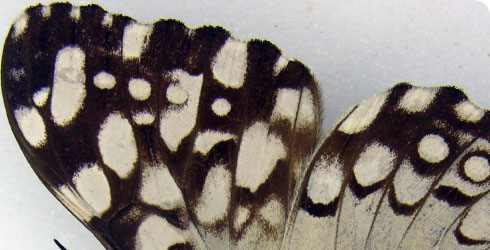Biology and behaviour
This butterfly lays eggs and the caterpillars feed on host plants of the Euphorbiaceae such as:
- Dalechampia stenosepala
- D. triphylla
- D. tiliifolia
- D. scandens( Jenkins 1983; Otero 1988, Neild, 1996, Host, 2010)
All immature stages of the nominal species are described in detail and well recorded by D’Almeida (1922). However the immature stages of Hamadryas feronia farinulenta are unknown.
The larva varies and can:
- be black with spots of red and brownish white
- have smaller dots and yellow spines
- be greyish green colours with spines down parts of the thorax (Scott, 1992)
Behaviour
Hamadryas feronia is difficult to spot due to its fantastic camouflage but can be found lying with it wings flat open on many trees.
Males are fast flyers and can be distinguished by the clicking noise they make during flight. They can be aggressive and will fly at intruders.
The clicking noise is heard by both males and the females of the species.
It is thought the noise is used to:
- attract a mate
- fight off rival males
- scare away predators
No-one knows how the sound is produced, but it is probably made by clapping the wings together.
Adults have been collected throughout the year, but are most abundant from June to September. Hamadryas feronia is found all day from sunrise to sunset and often on trees, but can also be found on the sides of rocks and foliage of trees.
This species feeds on rotting fruit. It is rare to find it feeding on flora.
